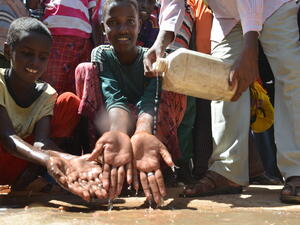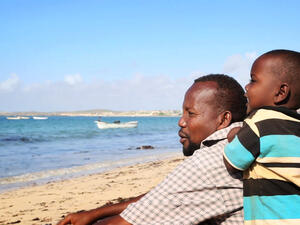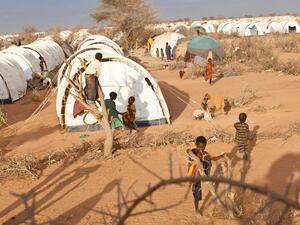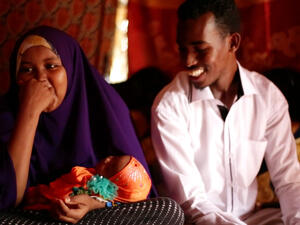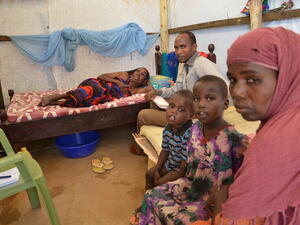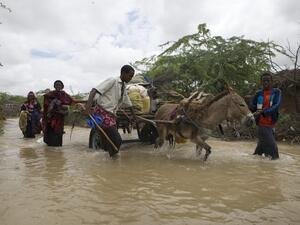Somali Bantus leave for America with hope for a new life
Somali Bantus leave for America with hope for a new life
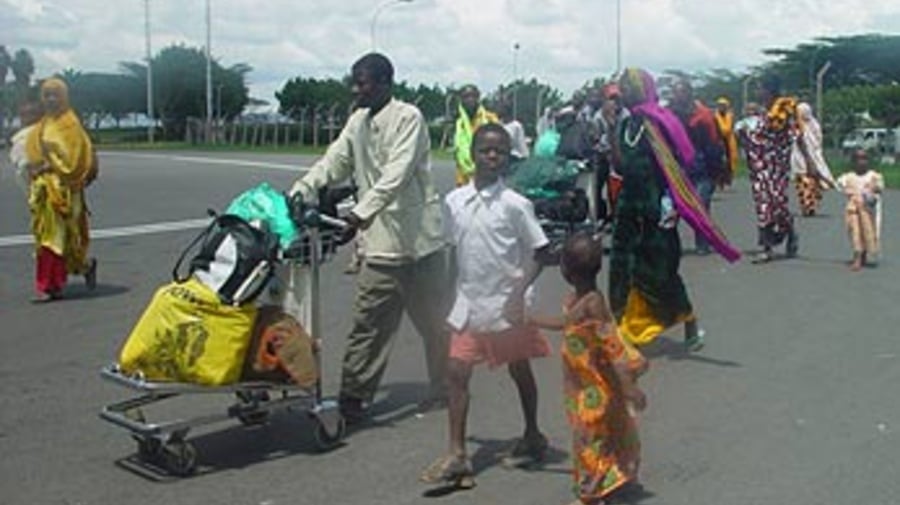
Somali Bantu refugees leaving for the United States from Nairobi's Jomo Kenyatta International Airport.
NAIROBI, Kenya, May 22 (UNHCR) - After years of hoping for a new life, the first groups of Somali Bantu refugees have left Kenya for the United States in one of the biggest resettlement operations to take place out of Africa.
In the last two days, 70 Somali Bantu refugees have flown out of Nairobi's Jomo Kenyatta International Airport, towards a fresh start in America. Another 150 are scheduled to follow in June as part of an ongoing programme that will eventually resettle some 11,800 Somali Bantu refugees in the US.
"I feel like my life is starting again," said Somali Bantu Shangoro Ramadhan Abdalla before boarding his flight on Wednesday. He had lived in eastern Kenya's Dadaab camp for about 10 years before being transferred to Kakuma camp to be documented for resettlement. From Kakuma, he was recently transferred to Nairobi's Goal Accommodation Centre, where he stayed until departure day.
"I never want to go back to Somalia again," said the 31-year-old refugee with six children. "My priority now is to learn American culture and take my children to school."
Amina Shokondo, a single mother of three, agreed: "I am so full of joy. I do not want to see Somalia again. But maybe one day my children will come back to Somalia and lead the country after they have acquired some education."
Oblivious to their parents' high hopes, the children ran around playing before departure, perhaps for the last time on African soil. The adults, meanwhile, lined up for new clothes - floral dresses and shawls for the women, white sweaters for the men - as well as hygiene items.
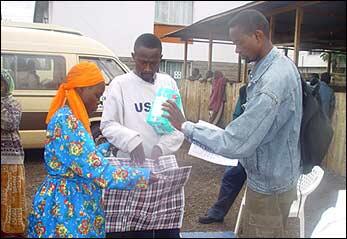
The refugees with new clothes and hygiene items before leaving the Goal Accommodation Centre in Nairobi.
The overall atmosphere was that of anxiety and uncertainty, as Lamungur Hussein, leaving with his family of nine, admitted, "This cannot be true. I will only believe it when I get there."
Hopefully, this will be the last leg of a long journey for many Somali Bantus, who have suffered centuries of persecution. They are a minority in Somalia, where their physical, cultural and linguistic characteristics distinguish them from the Cushitic majority. As such, they have long been considered second-class citizens in Somali society - exploited as labourers, and excluded from education, land ownership, political opportunities and representation.
In 1992, during the civil war in Somalia, more than 10,000 fled to refugee camps in Kenya. Discrimination against them by major Somali clans continued in the camps, so that few of the Somali Bantus wanted to go back to Somalia.
"Considering the security situation and specific protection concerns in their country of origin, repatriation of these refugees back to Somalia remains quite unlikely," said Arun Sala-Ngarm, the UN refugee agency's Deputy Representative in Kenya.
Because of their strong ancestral links to Tanzania and Mozambique, UNHCR tried to resettle the Somali Bantus in these two countries in 1993 and again in 1997, but neither of these initiatives was successful.
The refugee agency then approached the US government, which agreed in 1999 to consider resettling the Somali Bantus in America. In December 2001, UNHCR began an exercise to verify the identity of each Somali Bantu under consideration for resettlement through face-to-face interviews. The names and photographs of some 11,800 Somali Bantus were submitted to the United States Refugee Programme for resettlement processing, a process that was slowed by security concerns after the September 11, 2001 attacks on the US.
Since then, the International Organization for Migration (IOM) has taken over all logistical aspects of the resettlement operation with support from UNHCR.


